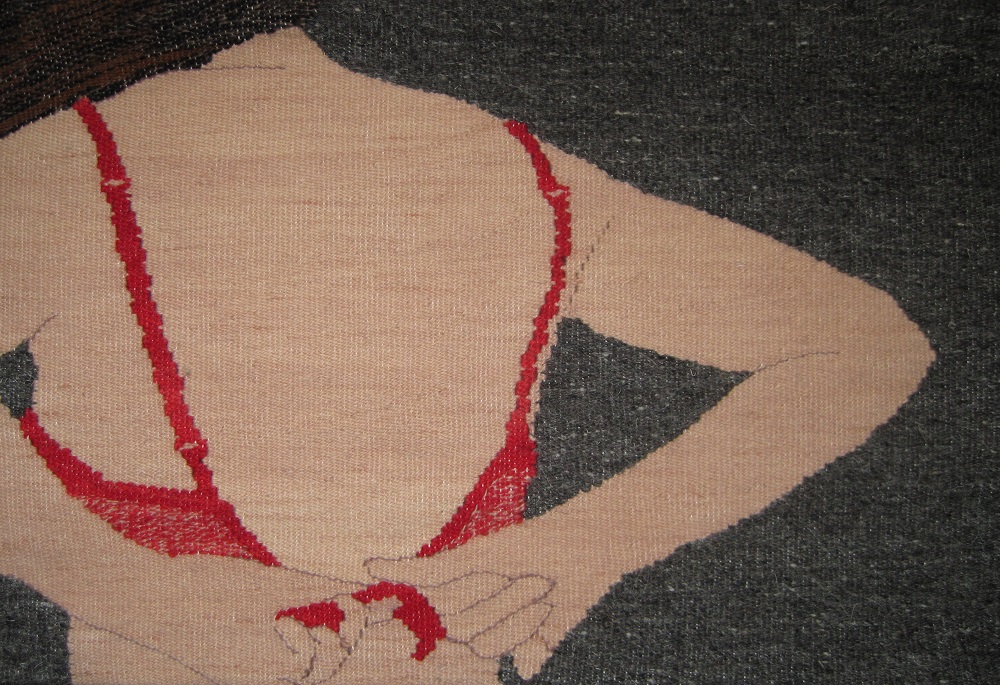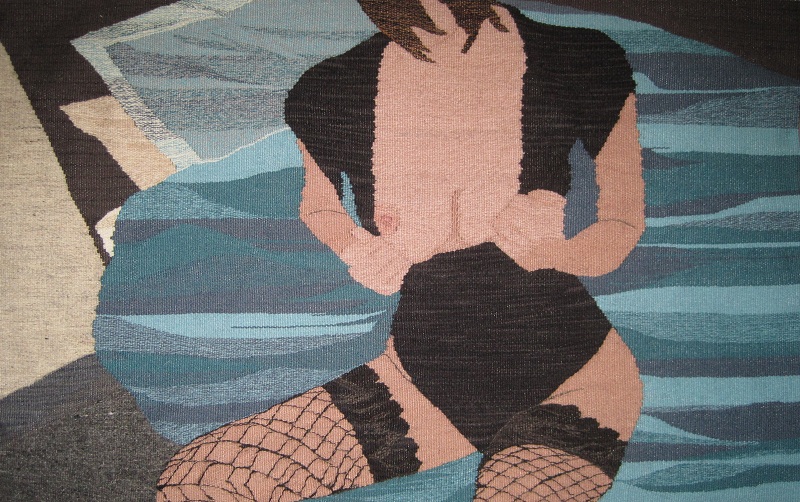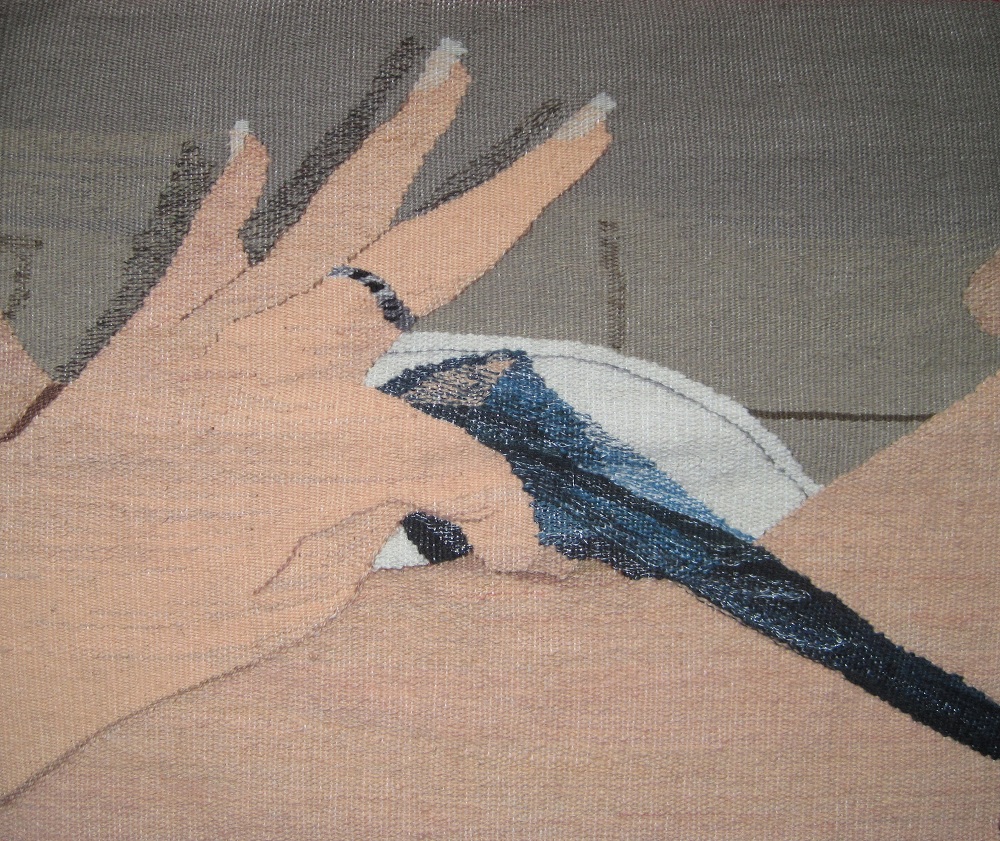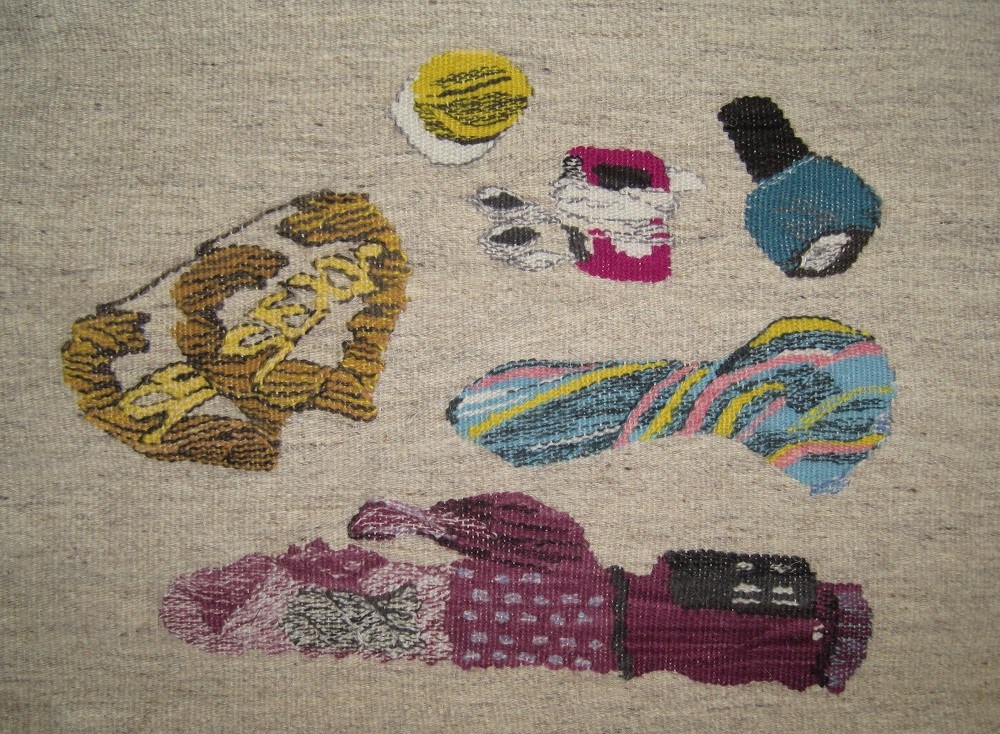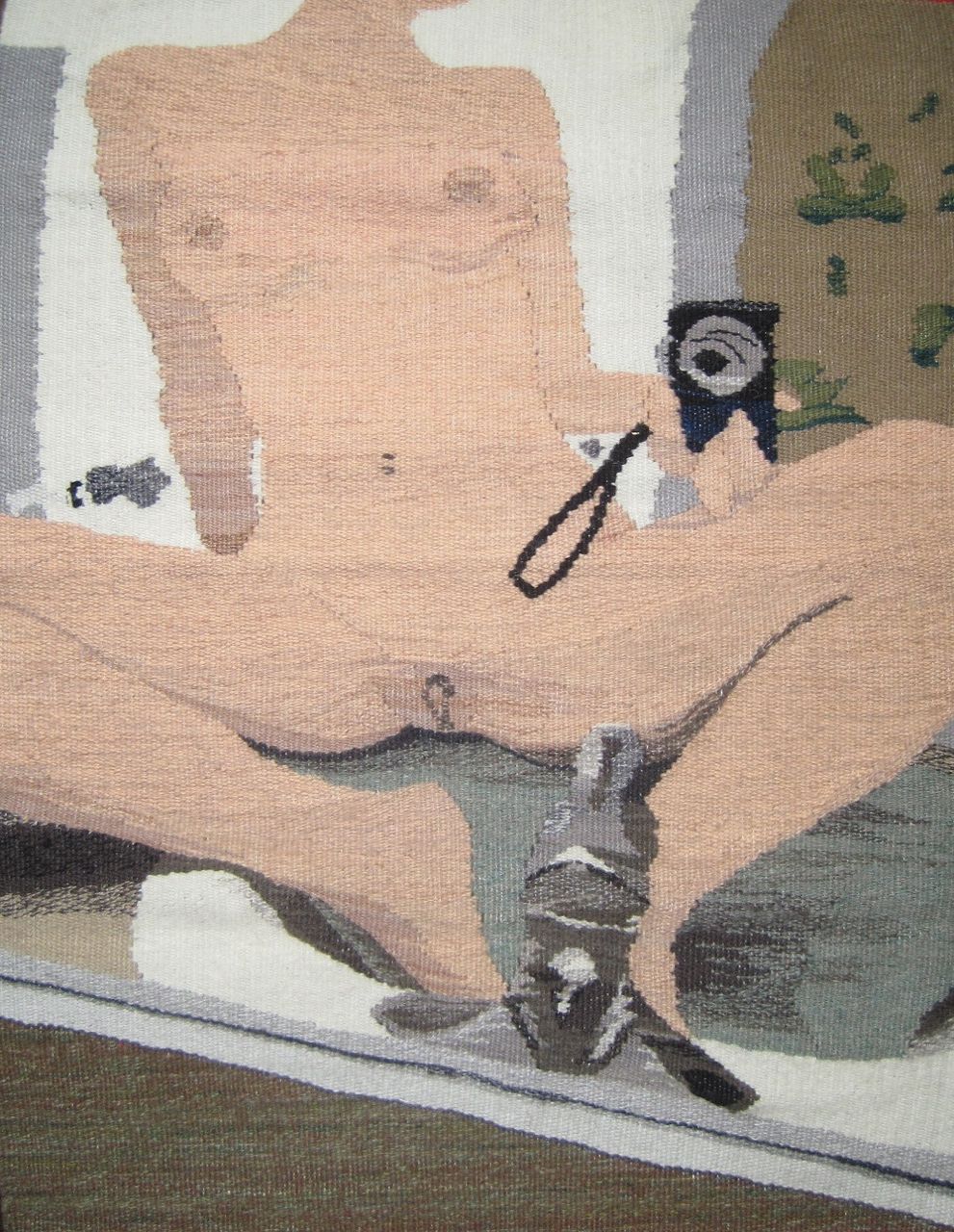Erin M Riley is a Philadelphia-based artist whose chosen medium is weaving, something that has not been covered much here on AM. What drew us to her tapestries in particular is her use of unconventional imagery, which bridges the gap between traditional techniques and contemporary issues that affect youth today. At times deeply personal and honest, her work explores post party mishaps, social and sexual interactions of dating, death, pop culture and more.
We had the chance to interview her ahead of a showing at Paradigm Gallery in Philadelphia on August 30th, with some of the pieces she submitted interspaced in the Q&A’s below…
Arrested Motion: For our readers who are unfamiliar with your work, can you please tell us a little about your background and your art?
Erin M Riley: Ok, I am Erin M Riley, I grew up in Massachusetts, went to art school at Massachusetts College of Art & Design and moved to Philadelphia once I was accepted at Tyler School of Art for grad school, and for now Philadelphia is where I make my art. I travel around the country to residency programs when I get the opportunity and exhibit all over. I have been weaving for 10 years this year and making representational tapestries for about 8 of those years. I went to art school imagining I would be a painter, but weaving was something that I fell upon, and haven’t stopped doing since. It is the medium I feel the most connected with.
AM: Would you be painting the same things if you had taken that up? Do you feel your message is communicated more effectively as tapestry compared to paintings?
EMR: Throughout high school and my childhood I expressed myself through paint, and quite possibly if I had not found weaving I might still be working in a painting/collage/mixed media way, maybe mixing in some technology or digital mediums. But, I spent most of graduate school trying to figure out how to make mixed media tapestries, dipping, burning, soaking, using many gallons of stuff you buy at Home Depot but inevitably evolved into weaving hand dyed wool tapestries on a floor loom. Tapestry is how I feel the most comfortable presenting the images that stand out the most. The images I am weaving are traditionally images that might be sent through Snapchat nowadays, or the ones that might be deleted after a hookup, I try to take pictures of the condoms after I have sex, the pictures I send to people, pictures of tables at parties, substances & liquids that change the coarse of events. I am taking the time to recreate these images as physical tapestries, because these are the events and objects that are significant to me. Tapestry allows images to be given more time, for hookups to gel, for mistakes to be thought over, its a way to over analyze every detail.
AM: We assume that when you first took up weaving, you started out with creating the more traditional imagery that was associated with the craft. If this was true, did you have an eureka moment where you turned to more provocative subjects? How did the transition come about?
EMR: In the first year or two of weaving you’re just figuring out the technical logistics, learning how looms work, different materials, strengths, and making a lot of mistakes. I started out working in a more abstract painterly fashion with the yarn because I was just in the beginning stages of learning shading, making shapes, and how to plan for large scale tapestries. I actually wove a lot of text, large areas of empty where the hand of the weaver is shown, with large block text but was soon challenged to create tapestries and was sourcing imagery from my childhood. This changed in grad school, and in the first year making art on my own I started to completely use found and contemporary images.
AM: How do you feel the market is for the type of work you do? On the one hand, it is not as commonly collected by people we know, but then again, what you do is pretty unique.
EMR: I have had an interesting go at selling artwork, I support myself through sales, but for many of my collectors my tapestries are the first piece of textile art they have collected. There is a certain warming up a buyer has to do to commit. This is also true for many of the galleries I show at, tapestries aren’t hung like paintings, hand woven pieces don’t tend to be level which can be visually annoying. Therefore, there is a learning curve initially but my work is quite easy to deal with. Some collectors chose to frame the pieces and this allows the work to feel a bit more like paintings, less fragile. I do feel like the market is evolving for textiles, my work is being collected all over the country and abroad, people are coming to me with questions about care, maintenance, etc.
AM: What kind of reactions have you seen to your work at openings or in conversations with collectors, fans, and those who may find your work offensive?
EMR: I have had many interesting exchanges with people who have seen my work evolve, grow more aggressive or explicit and back again. I am open about the changes in my work because often it reflects a change that is going on in my personal or sexual life. I have had conversations about cum and blow jobs with women who might never broach those subjects with their own kids, and I have talked about sexting and the images teens take with a father and his two obviously sexually active kids. I am open about the drug paraphernalia not because it reflects my own use, but because its something my family members have struggled with. I so glad that people enjoy many of the nude or scantily clad young ladies, but I am even more psyched when a college age girl comes to me and completely gets my perspective because we have both expressed our sexuality through images in text messages.
AM: Having both used yourself as well as photos you have found online or elsewhere as reference, how did the two compare? Anything interesting that was learned from the process in contrast?
EMR: I had been using mostly sourced images for a few years but had a residency with 3 months of solid work time allotted so I started collecting pictures of myself. I was taking them or asking old boyfriends for theirs and presenting tapestries of myself alongside the other women to see how I felt, like could I go through with making these pieces public. I then spent the summer weaving even more revealing images, going through a cathartic few months of living in my studio, weaving myself. The other women I wove always had felt like reflections of myself, but after I had gone down the road of weaving myself nude, weaving my tattoos and my breasts many different times, these girls were me. My work and the girls I present are all embedded with my narrative and therefore most of my work can be seen as a modicum of me.
AM: Any projects or upcoming shows that you can share with our readers?
EMR: Yes actually, you can look for my work at Paradigm Gallery in Philadelphia, August 30th, in September at Joseph Gross Gallery, University of Arizona and Bryan Ohno Gallery, Seattle, WA. I am also showing work in Houston with the West Collection in October and The Bishop Gallery in Brooklyn in November. I am also constantly sharing my process on Instagram as erinmriley. Thanks so much!



